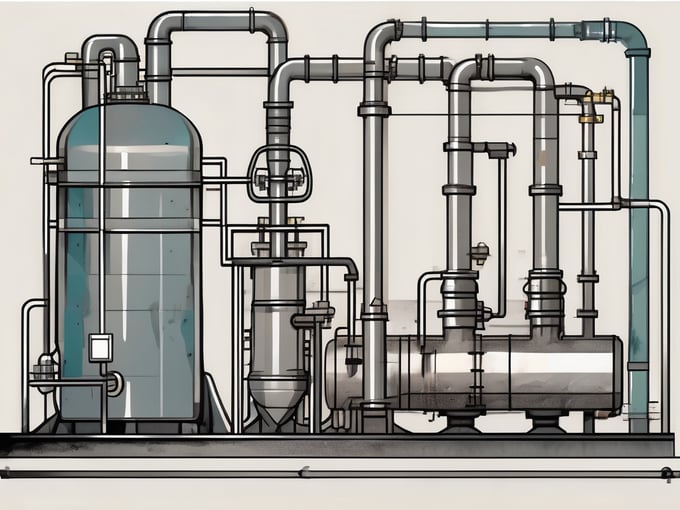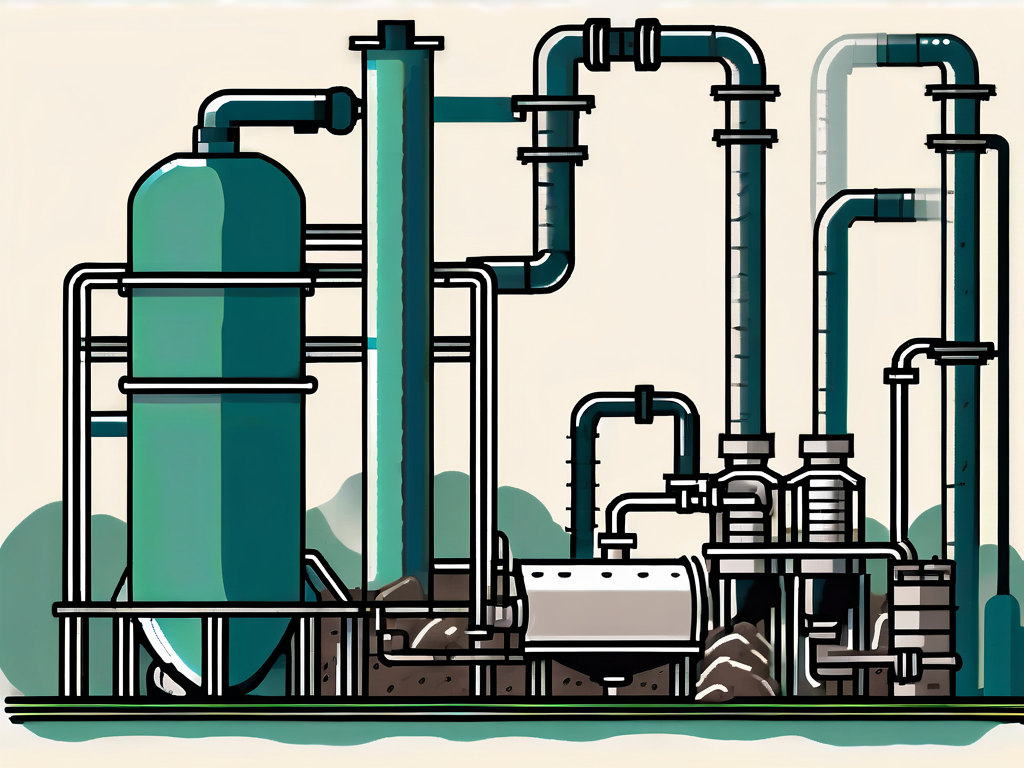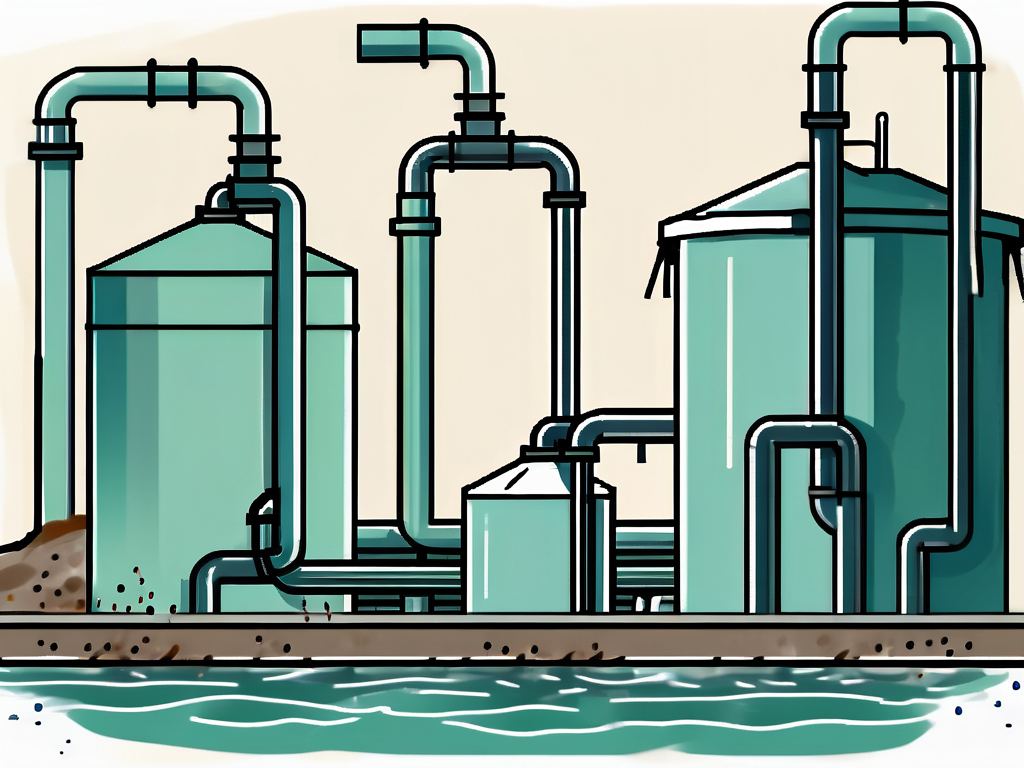
Sludge Dewatering: Wastewater Treatment Explained
Sludge dewatering is an integral part of the wastewater treatment process. It involves the separation of liquid and solid components, reducing the volume of sludge and making it easier to handle and dispose of. This article delves into the intricacies of sludge dewatering, its importance in wastewater treatment, and the various methods used in the process.
Understanding the principles of sludge dewatering and its role in wastewater treatment is crucial for professionals in the environmental engineering field, as well as for anyone interested in sustainable waste management practices. This glossary entry aims to provide a comprehensive overview of the topic, discussing the science behind it, the techniques used, and the benefits it offers in the broader context of wastewater treatment.
Understanding Sludge
Before delving into the specifics of sludge dewatering, it's important to understand what sludge is. Sludge is a byproduct of wastewater treatment processes. It is a semi-solid slurry that can be produced from a range of industrial processes, including water treatment, sewage treatment, and industrial wastewater treatment.
Sludge typically contains a significant amount of water, organic material, and inorganic material. The water content can be as high as 97-99%, making it difficult to handle and dispose of. The organic material in sludge can include various types of bacteria, viruses, and parasites, while the inorganic material can include heavy metals and other pollutants.
Types of Sludge
There are several types of sludge, each with its own characteristics and treatment requirements. Primary sludge is produced during the primary treatment of wastewater and consists mainly of organic solids that have settled out of the wastewater. Secondary sludge, also known as activated sludge, is produced during the secondary treatment of wastewater and consists of microorganisms used in the treatment process.
Other types of sludge include tertiary sludge, which is produced during the tertiary treatment of wastewater, and industrial sludge, which is produced from various industrial processes. Each type of sludge requires a different approach to dewatering, depending on its composition and the amount of water it contains.
Principles of Sludge Dewatering
The main goal of sludge dewatering is to reduce the volume of sludge, making it easier to handle and dispose of. This is achieved by removing as much water as possible from the sludge. The dewatering process involves the use of physical, chemical, and biological methods to separate the liquid and solid components of the sludge.

The effectiveness of sludge dewatering depends on several factors, including the type of sludge, the characteristics of the sludge, and the dewatering method used. The process can be challenging due to the complex nature of sludge, which can contain a variety of materials, including organic and inorganic solids, bacteria, viruses, and other microorganisms.
Physical Dewatering Methods
Physical dewatering methods involve the use of mechanical forces to separate the liquid and solid components of the sludge. These methods include centrifugation, filtration, and pressing. Centrifugation involves the use of centrifugal force to separate the solids from the liquid, while filtration involves the use of a filter medium to separate the solids from the liquid. Pressing involves the use of pressure to force the water out of the sludge.
Each of these methods has its own advantages and disadvantages. For example, centrifugation can be highly effective but requires a significant amount of energy. Filtration can be less energy-intensive but may require the use of chemicals to improve the dewatering process. Pressing can be effective for certain types of sludge but may not be suitable for others.
Chemical Dewatering Methods
Chemical dewatering methods involve the use of chemicals to enhance the separation of the liquid and solid components of the sludge. These methods include coagulation, flocculation, and conditioning. Coagulation involves the use of chemicals to destabilize the sludge particles, allowing them to aggregate and settle out of the liquid. Flocculation involves the use of chemicals to bind the sludge particles together, forming larger flocs that can be easily separated from the liquid.
Conditioning involves the use of chemicals to alter the properties of the sludge, making it easier to dewater. This can involve changing the pH of the sludge, altering its temperature, or adding specific chemicals to enhance the dewatering process. Each of these methods can be effective, but they also have their own challenges, including the need to handle and dispose of the chemicals used.
Benefits of Sludge Dewatering
Sludge dewatering offers several benefits in the context of wastewater treatment. By reducing the volume of sludge, it makes it easier to handle and dispose of. This can lead to significant cost savings, as it reduces the amount of sludge that needs to be transported and disposed of. It also makes it possible to recover valuable resources from the sludge, such as water and nutrients.
Furthermore, sludge dewatering can help to reduce the environmental impact of wastewater treatment. By removing water from the sludge, it reduces the amount of water that needs to be treated and disposed of. This can help to conserve water resources and reduce the release of pollutants into the environment. It also makes it possible to use the dewatered sludge as a soil conditioner or fertilizer, further reducing the environmental impact of wastewater treatment.
Cost Savings
The cost savings associated with sludge dewatering can be significant. By reducing the volume of sludge, it reduces the amount of sludge that needs to be transported and disposed of. This can lead to significant cost savings in terms of transportation and disposal costs. Furthermore, by recovering valuable resources from the sludge, such as water and nutrients, it can provide additional cost savings.
For example, the water recovered from the sludge can be reused in the wastewater treatment process, reducing the need for fresh water. The nutrients recovered from the sludge can be used as a soil conditioner or fertilizer, reducing the need for synthetic fertilizers. These cost savings can make sludge dewatering a cost-effective solution for wastewater treatment.
Environmental Benefits
Sludge dewatering can also offer significant environmental benefits. By reducing the volume of sludge, it reduces the amount of sludge that needs to be disposed of. This can help to reduce the environmental impact of sludge disposal, which can include the release of pollutants into the environment and the consumption of valuable land resources.
Furthermore, by recovering valuable resources from the sludge, such as water and nutrients, it can help to conserve these resources and reduce the environmental impact of wastewater treatment. The water recovered from the sludge can be reused, reducing the need for fresh water. The nutrients recovered from the sludge can be used as a soil conditioner or fertilizer, reducing the need for synthetic fertilizers and helping to improve soil health.
Conclusion
Sludge dewatering is a crucial part of the wastewater treatment process. It involves the separation of liquid and solid components, reducing the volume of sludge and making it easier to handle and dispose of. The process involves the use of physical, chemical, and biological methods, and its effectiveness depends on several factors, including the type of sludge and the characteristics of the sludge.

Despite the challenges associated with sludge dewatering, it offers several benefits, including cost savings and environmental benefits. By reducing the volume of sludge, it can lead to significant cost savings in terms of transportation and disposal costs. It can also help to reduce the environmental impact of wastewater treatment, by conserving water resources and reducing the release of pollutants into the environment.



